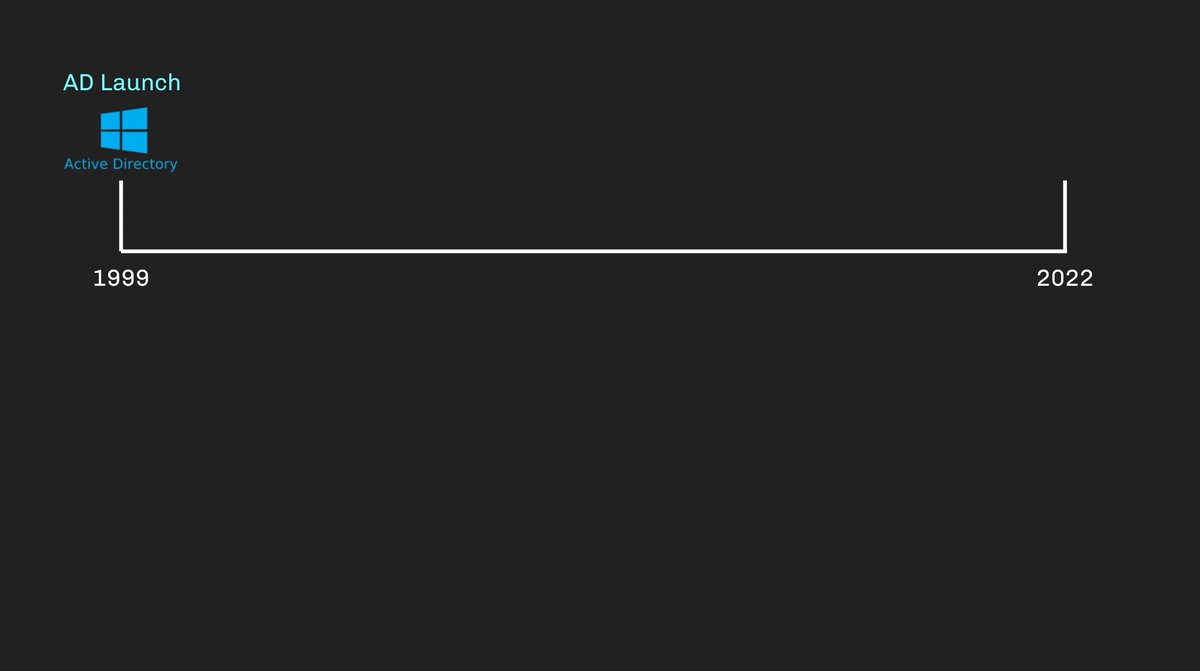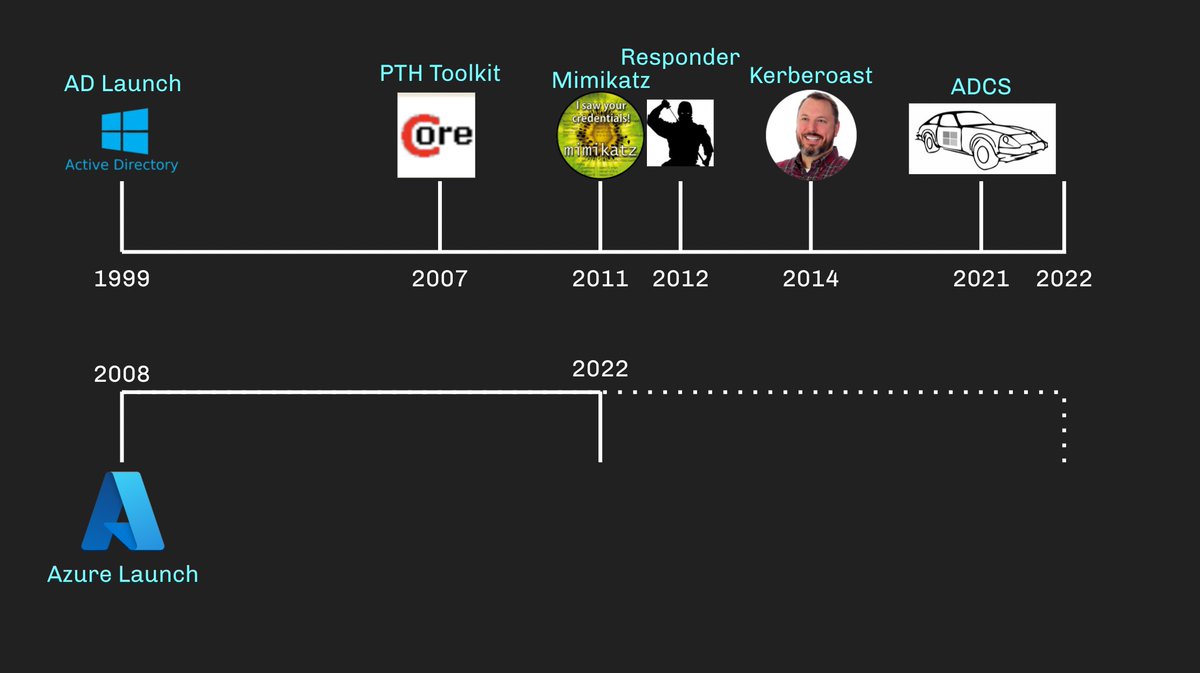
There has never been a better time than right now to get involved with Azure security research.
Not convinced yet? Let's compare where we are with Azure versus where we are with on-prem AD: 🧵
Not convinced yet? Let's compare where we are with Azure versus where we are with on-prem AD: 🧵
Active Directory initially came out in December of 1999. Now it's 2022. What's happened between then and now? 

We actually had pass-the-hash before AD came out, but it wasn't really made practical until @hernano released the PTH Toolkit in 2007, nearly 8 years after AD's release: 

2011 gave us Mimikatz by Benjamin Delpy (@gentilkiwi), 2012 gave us Responder by Laurent Gaffié (@PythonResponder). Two tools that are still used every day by every pentest shop a full decade after they came out: 

Tim Medin (@TimMedin) gave us Kerberoasting in 2014 - FIFTEEN YEARS after AD came out. Will Schroeder (@harmj0y) and Lee Christensen (@tifkin_) published their ADCS whitepaper and tooling just last year: 

What do these tools and techniques all have in common?
✅ - They all came out several years after AD's initial release
✅ - They have all stood the test of time and are all still used on a daily basis
✅ - NONE of them are "exploits" - they are abuses and abuse tooling
✅ - They all came out several years after AD's initial release
✅ - They have all stood the test of time and are all still used on a daily basis
✅ - NONE of them are "exploits" - they are abuses and abuse tooling
What about Azure? Technically, Azure initially came out in 2008. For an apples-to-apples comparison, let's put 2022 in the middle of our Azure timeline: 

In 2018, a full ten years after Azure's initial release, Karl Fosaaen (@kfosaaen) gave us Microburst: 

2020 gave us PowerZure by Ryan Hausknecht (@Haus3c), Stormspotter by Leron Gray (@mcohmi), and ROADtools by Dirk-jan Mollema (@_dirkjan): 

We are still in the early days of Azure security research. Compare where we are in 2022 with Azure compared to where we were in 2011 with AD: 

There are OCEANS of attack research opportunity in Azure. We are not even CLOSE to done. Who knows what the next 10 years might bring?
This isn't a controversial opinion - quite the opposite, as the results of this poll show:
https://twitter.com/_wald0/status/1493356798425776128
Ok. So you want to get involved. What do you do?
First, read this blog post by @JohnLaTwC: medium.com/@johnlatwc/def…
John's post, for me, argues very effectively for the value attack research provides for defense:
First, read this blog post by @JohnLaTwC: medium.com/@johnlatwc/def…
John's post, for me, argues very effectively for the value attack research provides for defense:
Second, catch up by reading everything written by these people:
@kfosaaen, @asegunlolu, @inversecos, @_dirkjan, @olafhartong, @DrAzureAD, @joslieben, @DebugPrivilege, @mariussmellum, @PyroTek3, @Haus3c
@kfosaaen, @asegunlolu, @inversecos, @_dirkjan, @olafhartong, @DrAzureAD, @joslieben, @DebugPrivilege, @mariussmellum, @PyroTek3, @Haus3c
Third, consider watching my talk at @1ns0mn1h4ck next month, where I will try to give you my best walk-through of my own abuse research methodology that you can use and improve: insomnihack.ch/register/
• • •
Missing some Tweet in this thread? You can try to
force a refresh








